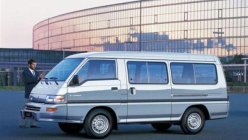Before the Toyota Hiace, the Nissan Urvan, midsize SUVs, seven-seater crossovers, and many other large-capacity vehicles plying the Philippines roads, the go-to vehicle for large families, and barkadas was the veritable L300. No not the utility van as we know it today, but as the 2nd-gen L300 Versa Van.
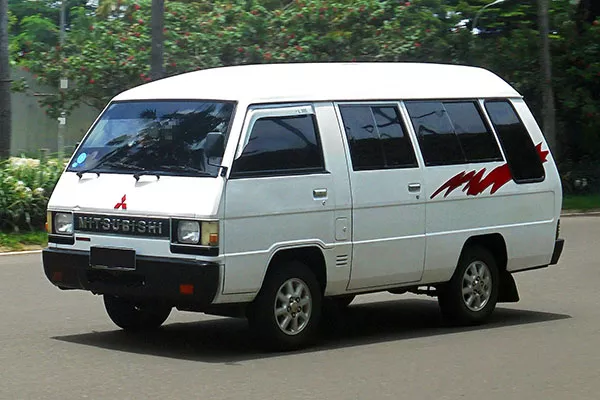
The L300 Versa Van in all it's boxy greatness.
So how did the L300 rise to become one of the most sought after passenger vehicles of its time? Why was it discontinued? To answer these, sit back, relax, and let us take a look back at the L300 Versa Van as we knew it, and how it became one of the most popular people haulers in the late 1980s to the early 2000s.
>>> Related: List of all Mitsubishi SUVs in the Philippines: With price list & brief review
Mitsubishi L300: Dead and back again
For 25 years, the L300 was a mainstay in several Southeast Asian countries like the Philippines and Indonesia. In the Philippines alone, Mitsubishi had two plants assembling the said model, one in Cainta, Rizal, and another Santa Rosa, Laguna. The only other country to have two plants for the L300 was in Indonesia, with China, South Korea, and even Mitsubishi’s home turf of Japan only having one.
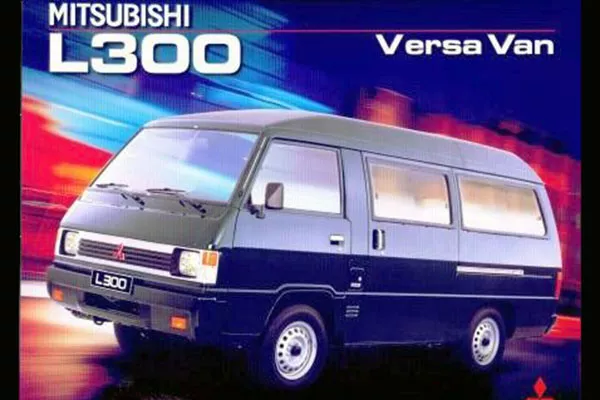
The L300 is also known as the Delica in Japan, and as the L300 Star Wagon in Indonesia
Why did we like it so much? Well, it was cheap and durable. How durable? Well, like other utilitarian vehicles, the L300 actually used beefy leaf springs for its rear suspension. It also had very robust fabric seats, it’s interior was almost entirely made out of hard plastics, and it used the ultrasimple 4G-series Mitsubishi inline-4 diesel engine, and the 4D-series gasoline engines.
Now, these engines were tough but simple machines. Both only had a single-overhead-cam, and they made less than 100 horsepower. Sure, it meant that the Mitsubishi L300 currently available for sale was slow, but both engines made the van relatively economical and very easy to fix.
Even its exterior design was as simple as it gets. It primarily used metal for its body panels so it had no crumple zones, and it came in a boxy configuration which was the norm for car models in the 1990s. Did it look bad? Not really, as it had this charm to it that could be likened to how the old Tomb Raider games’ conical chested Lara Croft was considered “hot” back in the 1990s.
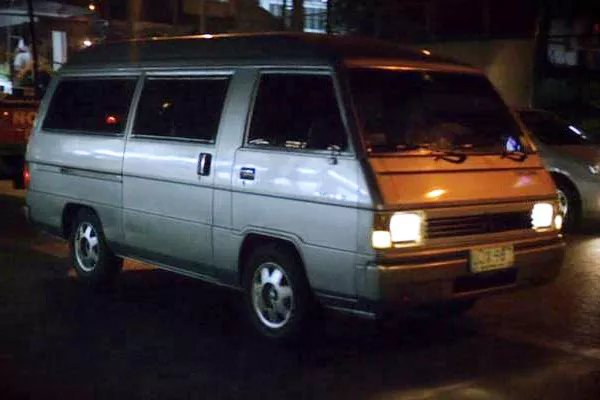
The L300 Versa Van has also appeared it numerous Pinoy movies like in Kinatay (2009)
As such, the Mitsubishi L300 Van wasn’t only popular among families and small businesses, but it also became a staple vehicle of local government units as an ambulance, and as company vehicles back in the 1990s. It was also common to see the PET (personal and equipment transport) version to be favored by utility companies.
And yes, even the FB (family and small business) version were commonly seen being able to take the many rough, uncemented roads in the provinces, all the while carrying eight people, or two people plus a hundred kilograms of goods. Sure it was bouncy as heck, and you probably needed to “catch a breath” after several hours on a rough road, but yeah, the L300 could take it.
Despite being one of the best selling vehicles Mitsubishi’s ever made, the L300 van was discontinued back in 2012 due to its engine not meeting the Euro 4 standards the government was implementing at that time.
Unlike most vehicles that met its end due to emissions standards however, the L300 made it's return in 2017, and it also got a new version in 2019. It had a new, cleaner more powerful diesel engine, and to this day, the L300 in utility van FB form is commonly seen in the hands of small to medium businesses as a logistics solution, or as a utility vehicle in many other industries.
The Versa Van…in van form, however, was discontinued and Mitsubishi Philippines moved on to producing cushier (and safer) family passenger vehicles like the Montero Sport and the Xpander.
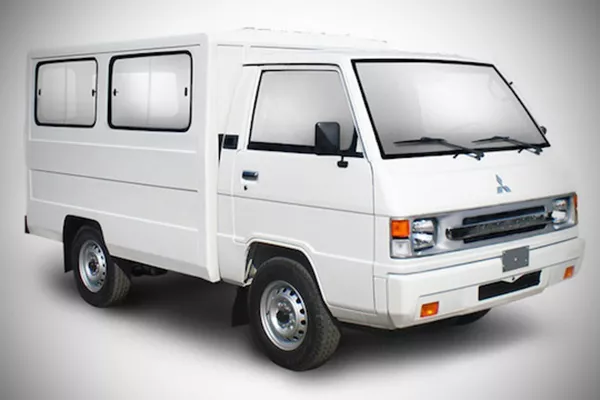
A decade later and it's still here. Talk about longevity!
Do you miss the L300? Well, there’s the L300 FB but that’s just a far cry from the glorious boxy look of the old Versa Van right?
For more nostalgic car features, keep it here on Philkotse.com.
Know more about Mitsubishi L300 2026

The current Mitsubishi L300 2025 by Japanese automaker Mitsubishi is based on the L300 Versa Van. While the latter was more of a family carrier, Mitsubishi has since marketed the L300 FB mainly as a commercial vehicle (CV). In the Philippines market, the L300 FB uses a Euro 4 compliant 2.2-liter 4N14 diesel power plant. At most, this mill can make up to 98 horsepower and 200 Nm of torque. Power is sent to the rear via a five-speed manual transmission.
When it comes to dimensions, the L300 spans 4,440 mm in length, 1,695 mm in width, and 1,915 mm. Also, it gets a wheelbase and ground clearance rated at 2,350 mm and 195 mm, respectively. This Mitsubishi CV is competing in the local market against the likes of Kia K2500, Isuzu Traviz, and Hyundai H-100.
>>> New and used Mitsubishi L300 2025 for sale in the Philippines
Mitsubishi L300 Launch
Mitsubishi Motors Philippines Corporation (MMPC) officially launched the refreshed L300 model in 2019. It now has better visibility, and more ground clearance, as well as a new bumper and grille.
Primarily, the Mitsubishi-made L300 is used as a commercial vehicle. Its leaf springs enable it to carry up to a ton of cargo, and it can also be configured as a refrigerated delivery truck, and a flat-bed truck, among others.
Mitsubishi L300 Exterior
On the outside, the refreshed Mitsubishi L300 for the Philippines market largely retains its boxy shape. Up front, it is equipped with box-shaped multi-reflector halogen headlamps, and halogen fog lamps. The FB body features a black-colored step for ease of entry, rectangular rear taillights, and dual rear doors. Lastly, the L300 rides on a set of 14-inch steel wheels.
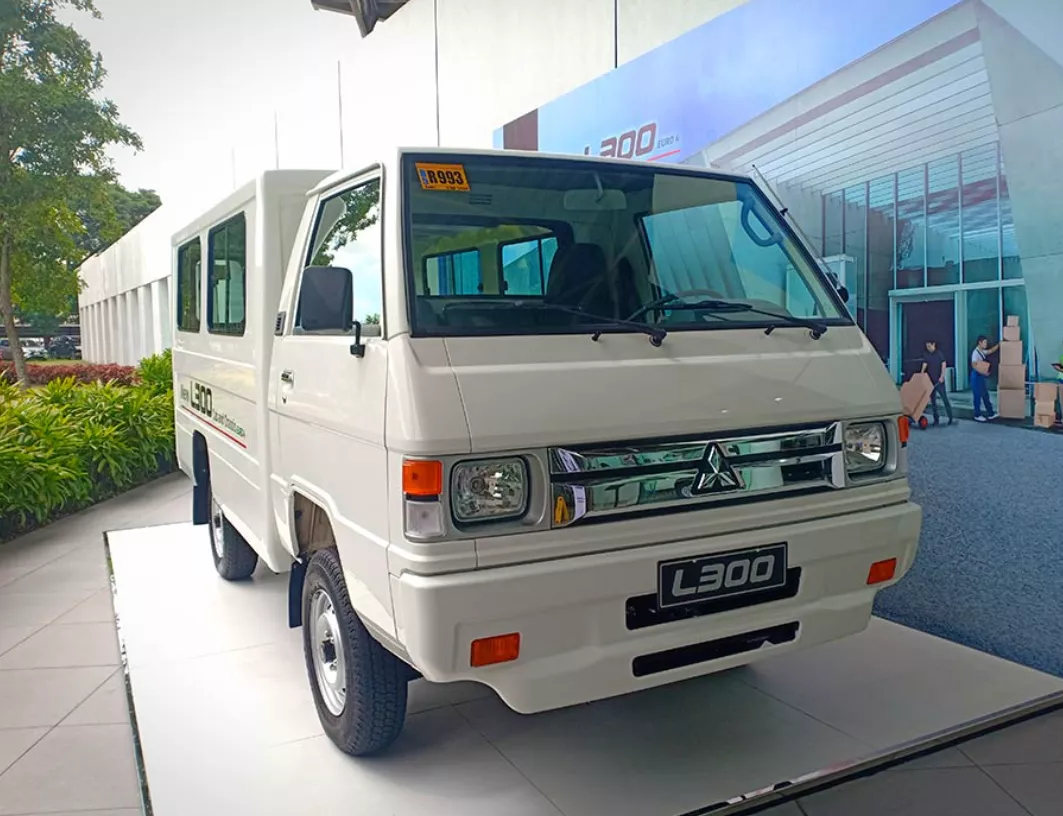
Mitsubishi L300 Interior
Most of the interior pieces of the Philippines-spec L300 2025 are made out of plastic. It also has fabric seats, a steering wheel made out of polypropylene, and a manual air-conditioning system. For the driver, the said model provides a turn-key ignition system, a manual adjustable driver's seat with height adjustment, and an analog gauge cluster.
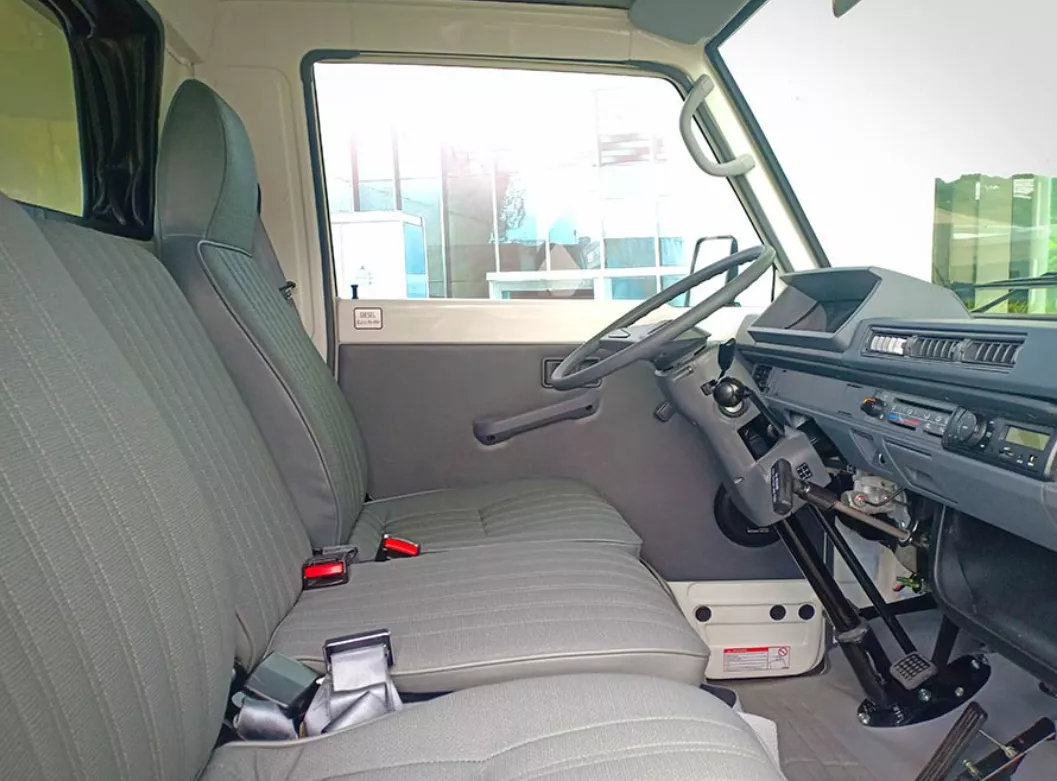
For the FB type L300, up to seven occupants can fit inside. The rear passenger section also comes with rear AC vents.
Technology & Safety Features
As a commercial vehicle, the Mitsubishi L300 for the Philippines market is spartan. It does get a radio tuner, that's linked to two speakers, and sufficient storage room in its front cabin.
For safety, the Mitsubishi-made commercial vehicle gets front-impact beams, side-impact beams, and seatbelts.
Platform & Chassis
The Mitsubishi L300 Philippines can either come as a four-door van or as a three-door van. For the three-seater variant, it has a length of 4,260mm, a width of 1,695mm, a height of 1,895mm, and a ground clearance of 195mm. It also has a wheelbase length of 2,350mm and a curb weight of 1,260mm.
In terms of layout, the L300 is a front-engine, rear-wheel-drive vehicle. It uses an independent wishbone-type front suspension, and leaf springs for the rear. Braking is handled by a front disc brake and a rear drum brake. For its handbrakes, it uses a manual, hand-operated type.
Mitsubishi L300 Engine & Drivetrain
The Philippine-spec Mitsubishi L300 2025 uses a Euro 4 compliant 2.2-liter inline-4 DOHC diesel engine with a turbocharged intercooler system. This engine can produce up to 98 horsepower and 200 Nm of torque. The said engine is then paired to a five-speed manual gearbox, which sends power to the rear wheels.
Mitsubishi L300 2025 Price List
| Variants | Price |
|---|---|
| Mitsubishi L300 Cab & Chassis | ₱825,000 |
| Mitsubishi L300 Aluminum No AC | ₱899,000 |
| Mitsubishi L300 with FB Body No AC | ₱936,000 |
| Mitsubishi L300 Aluminum Single AC | ₱944,000 |
| Mitsubishi L300 with FB Body Single AC | ₱981,000 |
| Mitsubishi L300 with FB Body Dual AC | ₱998,000 |
Mitsubishi L300 Pros & Cons
Pros
- Spacious interior
- Cost-effective maintenance
- Good fuel economy
Cons
- Not a lot of options offered
- No significant features
- Basic interior layout
Mitsubishi L300 FAQs
1. Is the Mitsubishi L300 reliable?
Absolutely yes. The Mitsubishi L300 may not have a standing-out appearance but it has good performance, long durability, and fuel economy. It’s an ideal choice both for business and family use.
2. What is the engine of the L300?
The Mitsubishi L300 owns a Euro 4 compliant 2.2-liter 4N14 diesel power plant which can generate up to 98 horsepower and 200 Nm of torque.
3. How much is the Mitsubishi L300?
The Mitsubishi L300 price ranges from ₱825,000 to ₱998,000 in the Philipine market.
4. Is the L300 good for business?
Yes, it is the top choice for small businesses since the Mitsubishi L300 has seat capacity of up to 14 passengers but its price is cheap. Its fuel economy is also very impressive. In terms of economy, the L300 is really ideal.
5. Does the L300 have automatic transmission?
No, the Mitsubishi L30 is not equipped with automatic transmission. Instead, it has a five-speed manual transmission.
₱ 813,000
ExploreRecent posts
- 200,000 Mitsubishi L300 Production Milestone Oct 22, 2020
- Mitsubishi Xpander Alternatives Nov 19, 2021
- Mitsubishi PH lends out several L300 units to transport essential workers Oct 19, 2020
- [Philkotse pick] Best passenger vans in the Philippines for every ride Jun 27, 2022
- How to Choose the Right Van for You to Drive in the Philippines Nov 30, 2022





